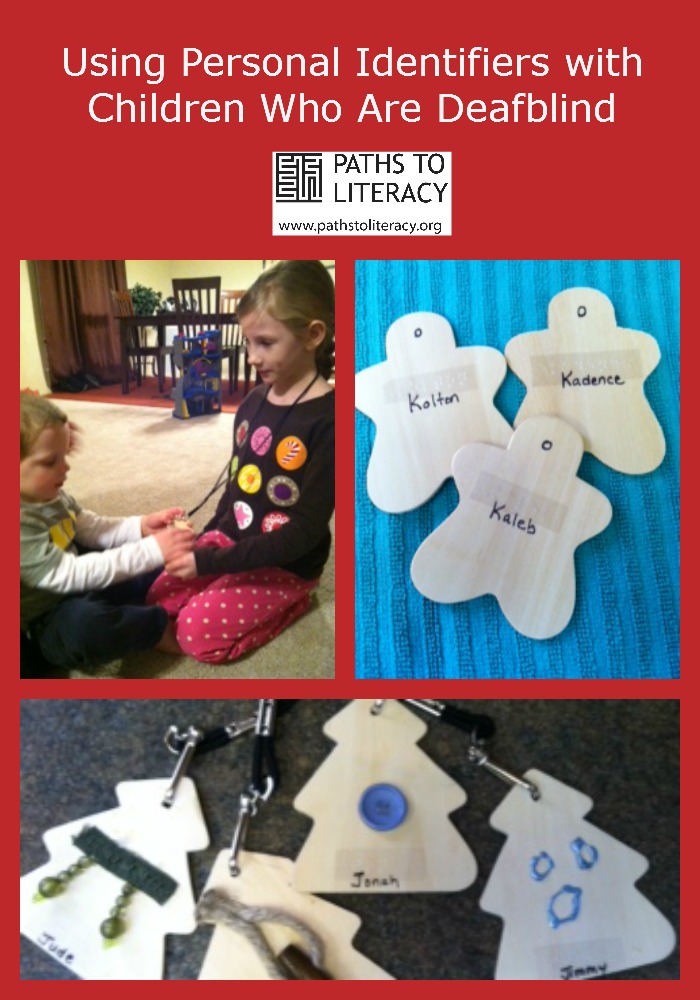Using Personal Identifiers with My Deafblind Son
My 4 ½-year-old, deaf-blind son Liam identifies both people he knows and people he meets by their identifiers. For most people an identifier may be a ring, watch, bracelet, etc. that they always wear. The more he knows a person, the more he can tell who they are by other means (how their hands feel, how they sign, smell, etc.), but he still will check for the object used to identify a person.
An identifier is an object a person wears, that can be used by someone with vision loss, to identify them. Identifiers are so important in the life a deaf-blind child. Liam especially loves to meet new people and wants to know their name signs immediately (he has a fantastic memory!).
Adults usually have something they always wear that can work as an identifier, however that is not always the case with children. I noticed when we have kids over (to play, holidays, birthday parties, etc.) Liam would always try to feel for an identifier and they never had one. I wanted to come up with an identifier for the children in our life that come in contact with Liam. I wanted the identifier to be meaningful to the children wearing them as well. I also wanted them to make sense to Liam so he can know who has come to his house to play!
I decided to make necklaces. Each family group would get a wooden shape that is unique to their family. I put the children’s name in print and in Braille on the shape. I gave the shapes to their parents. The children were then able to decorate the shape at home (with some guidance) with a tactile symbol that would represent them. The first family we tried this with was with good friends of ours who have 4 young children. I created a video to send to the family ahead of time with their name signs (since my son is deaf as well, we use specific signs that represent a name) so that they could practice before they came over during Christmas time since they do not know ASL.
When the family came over, the children knew to show their necklaces to Liam and let him feel them. Liam got to know their name signs and would even ask for some of the children by their name! Liam especially loved playing with the oldest child, Jaden. She enjoyed trying the ASL that she did know on Liam! I really appreciated the parents' enthusiasm and extra work in making the necklaces and encouraging/informing their children on how to interact and play with Liam!
I would call our first ‘try’ with the identifier necklaces a success!
Positives of creating identifier necklaces with children:
- Helps teach deaf-blind or blind child how to interact with peers
- More exposure to braille (used to name someone!)
- Creates ownership for the children since they were able to make the necklaces. It also helped educate others on how to be a friend to Liam and encouraged beginning stages of communication.
- Most importantly: Liam now could identify the friends that were over at his house playing!
- The identifiers can be used to refer to people after they have left the house. Their symbols can be incorporated into an experience book about their visit.
I have other necklaces ready to hand out to some of my other friends who have children. I am excited to see how their necklaces turn out as well! We are blessed to have so many wonderful friends and family in our lives that are willing to go the extra mile to include and communicate with Liam!!


Comments
personal identifiers